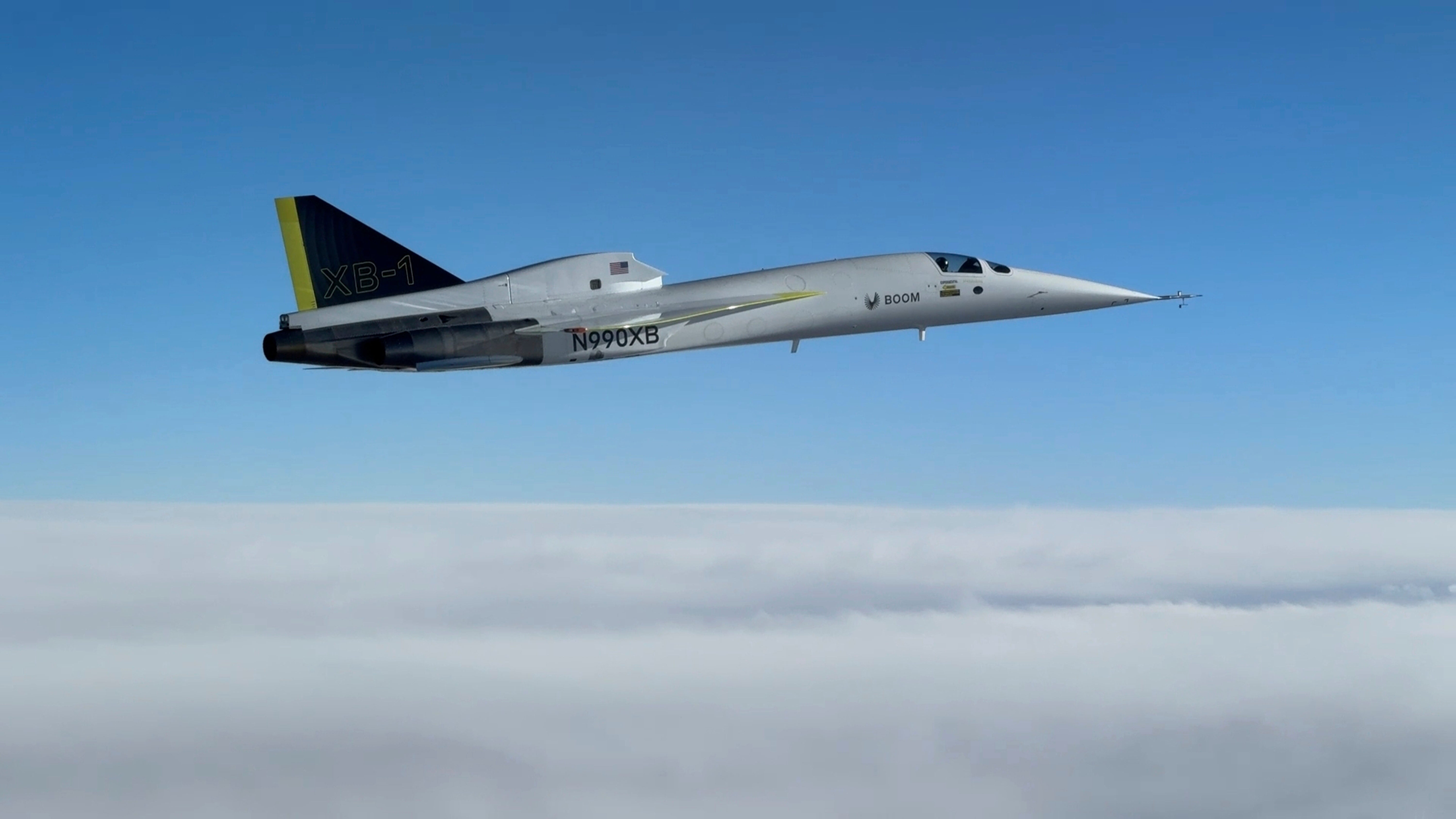Will Boom bring boom time back to supersonic travel? 'New Concorde' prompts revival talk
The aircraft developed by Boom Supersonic is the first independently funded jet to break the sound barrier

Your support helps us to tell the story
From reproductive rights to climate change to Big Tech, The Independent is on the ground when the story is developing. Whether it's investigating the financials of Elon Musk's pro-Trump PAC or producing our latest documentary, 'The A Word', which shines a light on the American women fighting for reproductive rights, we know how important it is to parse out the facts from the messaging.
At such a critical moment in US history, we need reporters on the ground. Your donation allows us to keep sending journalists to speak to both sides of the story.
The Independent is trusted by Americans across the entire political spectrum. And unlike many other quality news outlets, we choose not to lock Americans out of our reporting and analysis with paywalls. We believe quality journalism should be available to everyone, paid for by those who can afford it.
Your support makes all the difference.An aircraft developed by Boom Supersonic became the first independently funded jet to break the sound barrier this week.
The XB-1 aircraft accelerated to Mach 1.05 at about 35,000 feet during a test flight on Tuesday (28 January) in the same Mojave Desert airspace in California where Charles “Chuck” Yeager was the first to break the sound barrier in 1947.
Here's a look at the flight and the history of supersonic travel:
Why was the Boom Supersonic flight significant?
It was a step toward reviving supersonic commercial travel, which has been on hiatus since Concorde was grounded more than two decades ago.
Boom Supersonic has contracts with at least two airlines to buy their commercial airliners once they are developed. Several companies are working to come up with new supersonic jets that would be more fuel efficient – and create fewer climate-changing emissions – than Concorde.
Boom's founder and CEO Blake Scholl says the flight "demonstrates that the technology for passenger supersonic flight has arrived”.
What aircraft was used?
The test aircraft was made with lightweight carbon fibre and uses an augmented reality vision system to help with landing due to its long nose.
Boom, based in Denver, plans to use the technology to build its Overture commercial airliner, which the company says could carry as many as 80 passengers while travelling faster than the speed of sound. The jets would be built in North Carolina.
The company has said the engine it's developing for the Overture will have 35,000 pounds of thrust and is designed to run on sustainable aviation fuel.
What's the future of commercial supersonic travel?
American Airlines and United Airlines have pledged to buy jets from Boom Supersonic. Boom said last year it has orders for 130 aircraft, which include orders and pre-orders.
Those commercial flights could be limited to ocean crossings or would have to slow down over land to limit damage from forceful sonic booms, which can rattle buildings.
NASA is looking at developing a craft with a softer boom, and Boeing is also working on a prototype for supersonic commercial travel.
Any new such service will likely face the same hurdles as Concorde, which flew over the Atlantic and was barred from many overland routes because of the sonic booms it caused.
What happened to Concorde?
The Concorde jet, which was grounded in 2003, was the only supersonic commercial airliner that ever flew, and had its maiden flight in 1969.
At the time it was considered a technological marvel and a source of pride in Britain and France, whose aerospace companies joined forces to produce the plane.
The plane holds the record for the fastest transatlantic crossing by a passenger aircraft – 2 hours, 52 minutes and 59 seconds from London’s Heathrow Airport to New York's Kennedy Airport.
But Concorde never went mainstream, due to challenging economics and its sonic booms that led it to be banned on many overland routes. Only 20 were built, 14 of which were used for passenger service.
A deadly crash more than two decades ago hastened the jet's demise. On July 25, 2000, an Air France Concorde crashed into a hotel and exploded shortly after takeoff in Paris, killing all 109 people on board and four on the ground. Investigators determined that the plane ran over a metal strip, damaging a tyre that crashed into the underside of the wing, rupturing a fuel tank.
For more travel news and advice, listen to Simon Calder’s podcast